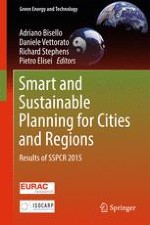2017 | OriginalPaper | Chapter
Co-benefits of Smart and Sustainable Energy District Projects: An Overview of Economic Assessment Methodologies
Authors : Adriano Bisello, Gianluca Grilli, Jessica Balest, Giuseppe Stellin, Marco Ciolli
Published in: Smart and Sustainable Planning for Cities and Regions
Publisher: Springer International Publishing
Activate our intelligent search to find suitable subject content or patents.
Select sections of text to find matching patents with Artificial Intelligence. powered by
Select sections of text to find additional relevant content using AI-assisted search. powered by
